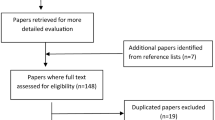Abstract
It has never been shown that wearing surgical face masks decreases postoperative wound infections. On the contrary, a 50% decrease has been reported after omitting face masks. The present study was designed to reveal any 30% or greater difference in general surgery wound infection rates by using face masks or not.
During 115 weeks, a total of 3,088 patients were included in the study. Weeks were denoted as “masked” or “unmasked” according to a random list. After 1,537 operations performed with face masks, 73 (4.7%) wound infections were recorded and, after 1,551 operations performed without face masks, 55 (3.5%) infections occurred. This difference was not statistically significant (p> 0.05) and the bacterial species cultured from the wound infections did not differ in any way, which would have supported the fact that the numerical difference was a statistically “missed” difference.
These results indicate that the use of face masks might be reconsidered. Masks may be used to protect the operating team from drops of infected blood and from airborne infections, but have not been proven to protect the patient operated by a healthy operating team.
Résumé
Il n'a jamais été démontré que le port d'une bavette chirurgicale diminue le nombre des infections pariétales. Au contraire, on a même rapporté une diminution de 50% lorsqu'on ne les utilisait pas. Cette étude a été élaborée pour déceler l'influence du port de la bavette dans la réduction des taux d'infections pariétales chez l'opéré en chirurgie générale de 30% au moins.
Pendant 115 semaines, 3,088 patients ont été inclus dans cette étude. Pendant une semaine donnée, tirée au sort, les chirurgiens mettaient ou ne mettaient pas de bavette. Aprés 1,537 opérations effectuées avec bavette, on a trouvé 73 (4.7%) abcès de paroi alors qu'après 1,551 interventions sans bavette, il y a eu 55 (3.5%) infections. Cette différence n'est pas statistiquement significative (p>0.05) et les cultures bactériennes à partir de la plaie opératoire ne différaient en aucune manière ce qui renforçait la conclusion que cette absence de différence statistiquement significative était réele.
Ces résultats indiquent que l'utilisation de la bavette chirurgicale pourrait être remise en question. La bavette joue un rôle de protection de l'équipe chirurgicale contre les infections portées par le sang éclaboussé en salle ou contre les infections aériennes, mais son effet sur la protection du patient n'a pas été prouvé lorsque l'équipe chirurgicale elle-même est en bonne santé.
Resumen
No ha sido demostrado que el uso de la máscara facial quirúrgica disminuya la tasa de infecfión postoperatoria; por el contrario, algunos autores han informado una reducción de 50% al omitir su uso. El présente estudio fue diseñado con el propósito de revelar una diferencia de 30% o más en las tasas de infección de la herida en procedimientos de cirugía general con el uso y sin el uso de la máscara quirúrigica.
En el curso de 115 semanas, 3,088 pacientes fueron incluídos en el estudio. Las semanas fueron designadas como “con máscara” o “sin mascara,” según la lista de randomización. En 1,537 operaciones realizadas con máscara se registraron, 73 (4.7%) infecciones de herida y en 1,551 operaciones realizadas sin máscara se informaron 55 (3.5%) infecciones. Esta diferencia no es estadísticamente significativa (p>0.05); las especies de bacterias aisladas de las heridas no exhibieron diferencias que puedieran hacer pensar que la diferencia númerica en favor de las operaciones sin máscara tenga importancia.
Tales resultados indican que el uso de máscaras faciales puede ser reconsiderado. Las mascaras pueden ser utilizadas para proteger al personal quirúrgico de gotas de sangre infectada y de infecciones en el ambiente, pero no han demostrado que protejan al paciente que es operado por un equipo quirúrgico sano.
Similar content being viewed by others
References
Mikulicz, J.: Das operiren in sterilisirten zwirnhandschuhen und mit mundbinde. Centralblatt für Chirurgie26:714, 1897
Hübener, W.: Ueber die möglichkeit der wundinfection vom munde aus und ihre Verhütung durch operationsmasken. Zeitschrift für Hygiene28:348, 1898
Blatt, M.L., Dale M.L.: A bacteriological study of the efficiency of face masks. Surg. Gynecol. Obstet.57:363, 1933
Madsen, P.O., Madsen, R.E.: A study of disposable surgical masks. Am. J. Surg.114:431, 1967
Wagenknecht, L.V., Madsen, P.O.: Experimentelle prüfung der effektivität chirurgischer gesichtsmasken. Chirurg45:184, 1974
Quesnel, L.B.: The efficiency of surgical masks of varying design and composition. Br. J. Surg.62:936, 1975
Rogers, K.B.: An investigation into the efficiency of disposable face masks. J. Clin. Pathol.33:1086, 1980
Rockwood, C.A., O'Donoghue, D.H.: The surgical mask: Its development, usage and efficiency. Arch. Surg.80:963, 1960
Meleney, F.L., Stevens, F.A.: Postoperative haemolytic streptococcus wound infections and their relation to haemolytic streptococcus carriers among the operating personnel. Surg. Gynecol. Obstet.43:338, 1926
Letts, R.M., Doermer, E.: Conversation in the operating theater as a cause of airborne bacterial contamination. J. Bone Joint Surg.65-A:357, 1983
Ritter, M.A., Eitzen, H., French, M.L.V., Hart, J.B.: The operating room environment as affected by people and the surgical face mask. Clin. Orthop. Related Res.111:147, 1975
Orr, N.W.M.: Is a mask necessary in the operating theatre? Ann. R. Coll. Surg. Engl.63:390, 1981
Chamberlain, G.V., Houang, E.: Trial of the use of masks in the gynaecological operating theatre. Ann. R. Coll. Surg. Engl.66:432, 1984
Ruthman, J.C., Hendricksen, D., Miller, R.F., Quigg, L.: Effect of cap and mask on infection rates. Ill. Med. J.165:397, 1984
Pollock, A.: Organisms that present a risk to the patient. In Surgical Infections, London, Edward Arnold, 1987, p. 7
Fry, E.D.: The pathogen. In Infection and the Surgical Patient, H.C. Polk, Jr., editor, Edinburgh, Churchill Livingstone, 1982, p. 22
Fitzgerald, R.H., Washington, J.A.: Contamination of the operative wound. Orthop. Clin. North Am.6:1105, 1975
Tunevall, T.G., Jörbeck, H., Larsson, K.: Wearing surgical face masks during acute tonsillitis, (in press)
Author information
Authors and Affiliations
Additional information
Supported by a grant from the Stockholm County Council.
Rights and permissions
About this article
Cite this article
Tunevall, T.G. Postoperative wound infections and surgical face masks: A controlled study. World J. Surg. 15, 383–387 (1991). https://doi.org/10.1007/BF01658736
Issue Date:
DOI: https://doi.org/10.1007/BF01658736




